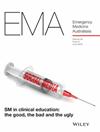Performance Review of Emergency Care Management Plans Pre- and Post-Implementation of Electronic Records
Abstract
Introduction
Patients who frequently present to the Emergency Department (ED) often have complex care needs, requiring substantial resources and resulting in longer stays. Emergency Care Management Plans (ECMPs) are designed to help clinicians adopt a person-centred approach, clarify goals, avoid unnecessary interventions, and reduce ED visit frequency and duration. ECMPs at our institution were previously stored in paper medical records, making timely access difficult. On April 2, 2012, ECMPs were scanned into the Electronic Medical Record (EMR), allowing easier access. This study assesses the impact of electronic ECMPs.
Methods
Using a retrospective observational design guided by the STROBE checklist, we evaluated whether the introduction of electronic ECMPs reduced the frequency and duration of ED visits. Data from all ED patients with electronic ECMPs were extracted and analysed to compare variables pre- and post-implementation, including demographics, most common triage data, visit frequency, length of stay (LOS), and discharge diagnoses.
Results
A total of 115 patients (mean age: 53) were included. Ambulance transport was the most common (64%), and Australasian Triage Scale (ATS) category 3 was the most frequent (57%). Post implementation the mean number of presentations reduced from 16 to 9, and ED LOS (EDLOS) decreased from 4676 to 2577 min (p < 0.001). Short Stay Unit LOS (SSULOS) decreased from 1359 to 638 min (p < 0.001), leading to an overall reduction of 2802 min (p < 0.001).
Conclusion
ECMPs effectively reduced both the frequency and duration of ED visits. Further research is needed to explore patient experience and other outcome measures.

 求助内容:
求助内容: 应助结果提醒方式:
应助结果提醒方式:


